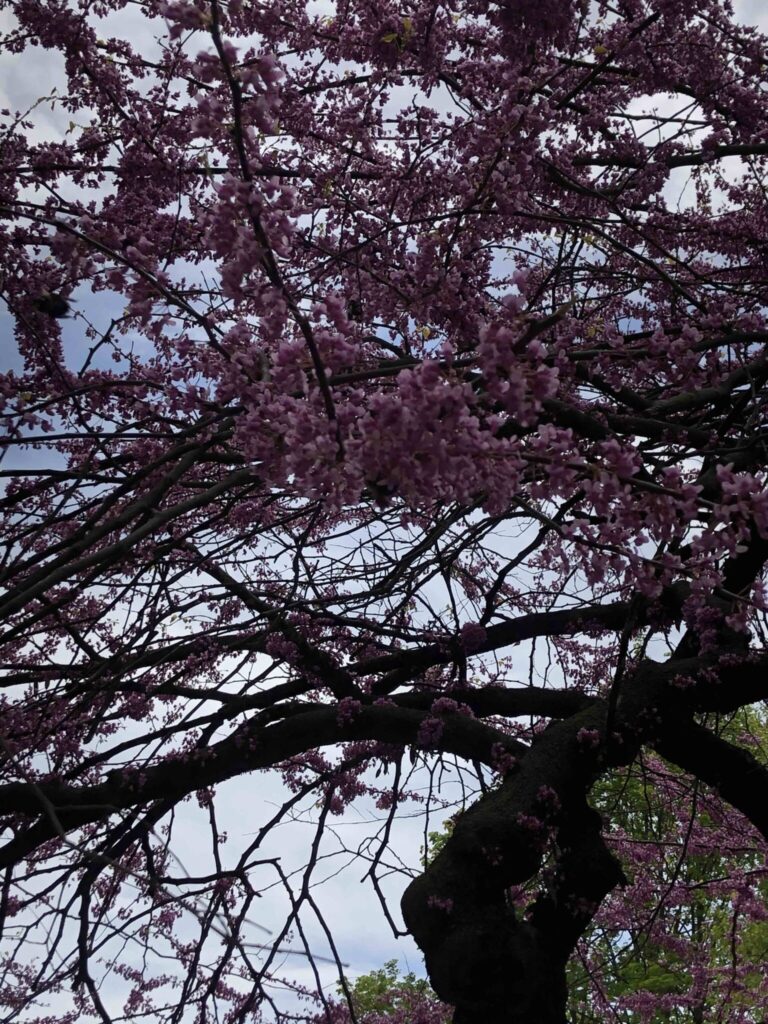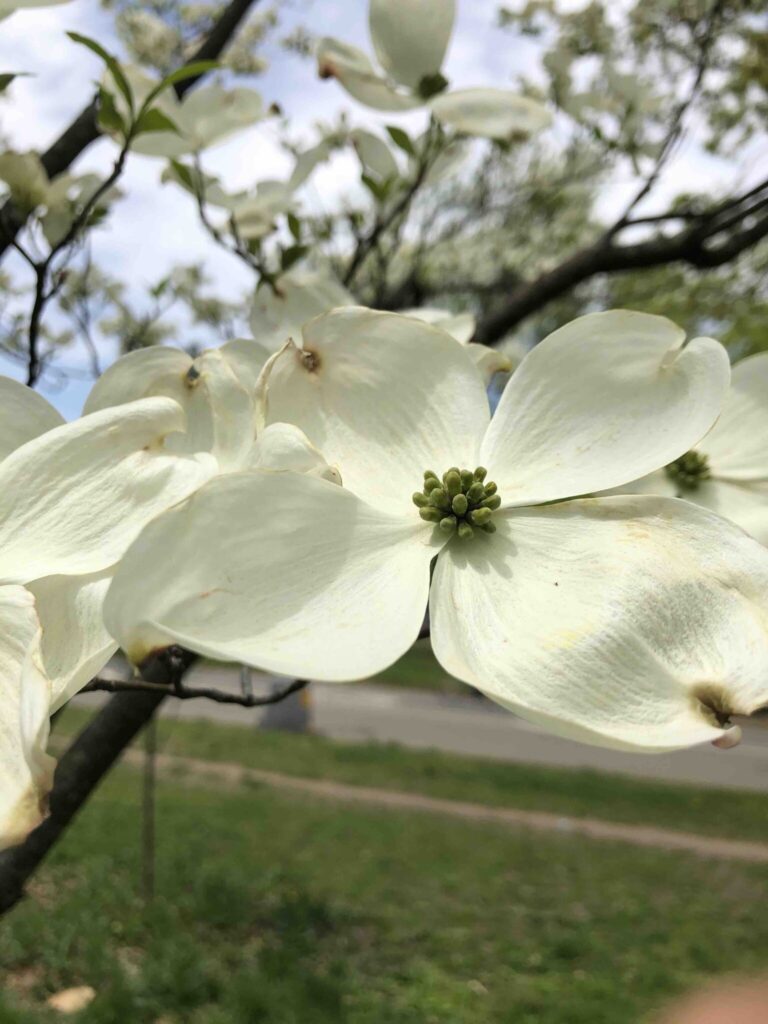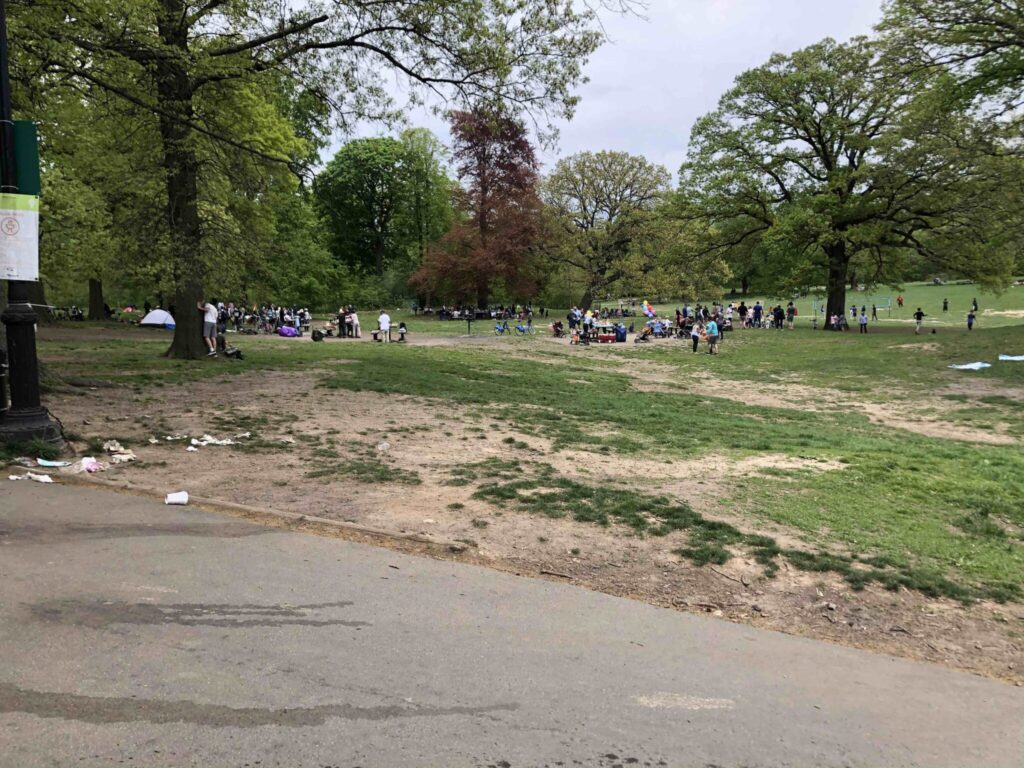This week’s readings and assignments ask you (ask us) to look at higher education at a slant. Maybe mushrooms and spark birds have nothing to do with higher education, or maybe they do—but we’re not asking about mushrooms and birds, we’re asking about noticing.
Two underlying questions connect these pieces in my mind:
- What preconditions make a certain reality possible?
- How might we find delight in that reality?
What do you do when your world starts to fall apart? I go for a walk, and if I’m really lucky, I find mushrooms. Mushrooms pull me back into my senses, not just—like flowers—through their riotous colors and smells but because they pop up unexpectedly, reminding me of the good fortune of just happening to be there. Then I know that there are still pleasures amidst the terrors of indeterminacy.
—Anna Lowenhaupt Tsing, The Mushroom at the End of the World, p. 1
Here’s more about my noticing for this week, and what it got me thinking about.
I’ve mentioned my walks in Green-Wood Cemetery as an important location for my own noticings. This week, though, I focused on Prospect Park. In particular, I thought about the original caretakers of the land; the ways the park is used now; the places of stillness and the places of joy and the places with barren earth and piles of garbage.
It is easy to notice the beauty of redbuds and dogwoods (and whatever the beautiful tree in the third picture is):



But what about the less obviously beautiful spots? I normally linger in the quiet, peaceful corners, but this time I paused somewhere different.

Here, I asked myself to pause and notice. It’s a still photo, so you can’t hear the sounds, but there was so much joy and vibrancy in the scene. I thought about the bare patches, the leftover garbage—spots where the landscape is not as well cared for, maybe, but also traces of gatherings and celebrations. In COVID times, these residues of outdoor joy are even sharper than usual, since parks are one of the few places we can safely gather.
I thought, too, about who is able to gather and celebrate freely, and who is more likely to have their parties surveilled and put to an end. I thought about whose joy is celebrated in parks, whose gatherings may be bittersweet.
So how does this connect to higher education? I think that these kinds of acts of noticing are necessary in order to have a clear picture of the landscape—to move beyond assumptions or received wisdom and really see what is working in an institution, what is harmful, what might have unintended consequences (good or bad). In higher ed there is so much that is taken as a given without much of a pause to ask why something is the case, and whether or not it is beneficial to the underlying goals. Like we talked about in an earlier week, there’s often a sharp disconnect between stated values (mission statements etc) and tacit values (the structures that govern how the institution functions)—and pausing to notice helps bring the tacit values into clearer focus so that change becomes possible.
In “Spark Bird,” City College professor Emily Raboteau applies this art of noticing to the murals in her neighborhood. From a starting point of murals on closed shop grates, Raboteau’s prose swirls through much bigger patterns.
To my eye, the project is at once a meditation on impermanence, seeing, climate change, environmental justice, habitat loss, and a sly commentary on gentrification, as many of the working-class passersby are being pushed out of the hood in a migratory pattern that signals endangerment. Most of all, the murals bring me wonder and delight. I can hardly be called a bird-watcher. But because this flock has landed where I live, work, parent, pray, vote, and play, permit me to be your guide.
—Emily Raboteau, Spark Bird
The murals of the birds do not make these connections: Raboteau does, in her walking, wandering, photographing, thinking, writing. Noticing.
So, in class tomorrow I’ll ask what happens when you (or we) apply this kind of noticing to higher ed, to CUNY, to our departments? Where are there unexpected pockets of joy and delight? Matsutake only grow in pine forests that spring from areas of deforestation—human disturbance and destruction. They spring up on their own, but have never been successfully cultivated. Without the deforestation, the matsutake would not grow. As we consider our own imperfect ecosystems, where might we find the kinds of “patchy assemblanges” that Tsing describes in the ravaged landscapes that nonetheless foster life?
I’ll end with some terms I hope we talk about (in a word cloud, because a linear list doesn’t feel quite right):




